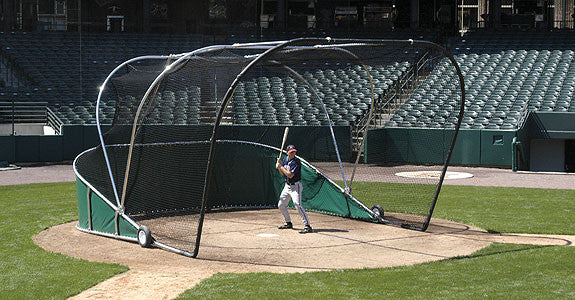situation for the umpire to make a ruling on what is yours:
Runner on first base, batter with a 2-2 count. The pitches made in the batter swings at the pitch and tips the ball so that it goes directly into the catchers chest protector and then drops into his glove. The runner takes off the second and a throw was made in the runner called out. The coach protest at the runner is not out sent back to first base.
Now the question is is the right and why, and then what would we do with the batter. =================================================
now hopefully before you read this answer you thought about the question. The answer is it's a foul ball any ball that does not go directly into the catcher's glove is considered a foul ball. And all the actions undertaken when a foul balls made are taken in this case so the runner goes back to first, and foul balls call on the batter so the count stays 2-2. If it had been a foul -tip directly into the catcher's glove and in the play proceeded as described the runner would've been out in the batter would have been out on strike three. So it's important to know the difference between a foul ball in a foul tip.
As an umpire at the lower levels, high school and youth, I'm confronted with parent saying look at my video camera you can see an instant replay that he was safe, out, whatever their trying to convince you of. Course the rules do not allow it but parents are influenced by instant replay we see on TV and all the professional sports. It's never going to happen at a level below college at best because of the technology and manpower needed to create it accurately and efficiently. But with that said this is an opinion question I'd like to hear from you:
When we watch baseball on TV and a player slides into the base and is clearly safe but because of his slide he hits the base hard enough to cause him to pop up above the base by a fraction of an inch. Therefore he's ruled off the base when the tag is held there or applied at the precise moment he gets above the base by the physical force. This is not a case of sliding past or sliding over the base when you caused your own problem this is simply a matter of physics to create this instantaneous, and microscopic distance between the foot the base and because we can freeze-frame it players are getting called out when that's not the intent of the rule.. I believe were calling too much of the letter of the law and not the intent. Instant replay has been beneficial I don't deny that but it can't get down to the point being a detriment with all these Popoff plays.
I like to hear the opinion of other fans, players, umpires people that are involved how do you feel about players being called out when they really worked off the base as part of the action of being safer out.
question from umpire Arnald Swift
I was coaching in a youth game in the day and this came up and while it's been talked about many times is still a problem that comes up so I thought I'd go over a couple of situations that you're going to see especially with the younger ballplayers, and if you happen to be in umpire hopefully you'll be able to handle it correctly.. It's confusing enough that there is a famous case in the World Series where it was called wrong.
Situation = two runners on the same base there are couple of things to consider but the first and foremost is who has the right to that base. The other player is the same as being off the base and can be tagged out on matter where he standing.
First situation = runner on first and second base ball hit to the shortstop who bobbles it but picks it up in time to get in front of the runner at second going to third that runner turned around and goes back to second. Who's out? The runner that was on second originally because of the bases behind him being occupied the ball was hit he had to run, he was forced, so therefore he had no right to second base and when he was touched regardless of priesthood he's out in the runner coming from first base was safe at second because he had the right to that base. Now a little twist on that that you see every once in a while the runner from first turns and starts back and is the first one gets touched, he's out but now the runner that was originally on second no longer has to run and therefore he's safe.. So defense the player really should tag the runner that is advancing to the next base then many times in the runner will panic and leave and you can get a double play.
second situation = runner at third and second nobody on first. The ball is hit to the third baseman and the runner on third does not run but the runner on second does run and comes over and touches third base. Now the third baseman goes to third base and touches both runners. Now the question is who is out-- the runner coming from second base, he didn't have to run therefore he had no right to third base so the original runner on third base is safe.
The defense the players need to be aware of in what order to tag a runner(s) when there are two on base at the same time..
Thoughts from umpire Arnald Swift
This season has started out really very well with not a lot of controversy, you always have some question about balls and strikes, safe and out,, Fair or foul but those are things every umpire is faced with every game.
The interesting question has come up recently about throwing to an unoccupied base,, I've seen it several times now in the real young baseball were when a guy gets on base they're going to steal and the cancers aren't able to stop them. This can certainly come up at any level but it's more prevalent here. Here's the situation And how I read the rule book and how I call it is an umpire. Runner is at first base, no one has at second has the right handed picture comes set and even lift his leg but makes no move to home, and that's important makes no move to home he sees the runner break so he continues to pivot to second base and throw the runner out. Almost the same thing runner at second base and no one on third as the pitcher comes set and raises his leg again making no move toward home plate the runner breaks he simply steps the third and throws the ball in the runners tagged out.
Now what most coaches want to call is a balk, because they through to an unoccupied base,, what they don't know is the rule that follows that first statement where it says except to put out or drive back and advancing runner. That's all that pitcher did. He never made moved home plate in the throw to second it was just the inside out move, spend move, that every pitcher does going back to second base, when he went to third base it's the same exact move every left-hander does going to first base only this time he went to third two put out or drive back and advancing runner.
Just to finalize this I looked up in the major-league rule book the following: The pitcher, while touching his plate, throws, or feints a throw to an unoccupied base, except for the purpose of making a play;
Rule 6.02 (a)(4) Comment (Rule 8.05(d ) Comment): When determining whether the pitcher throws or feints a throw to an unoccupied base for the purpose of making a play, the umpire should consider whether a runner on the previous base demonstrates or otherwise creates an impression of his intent to advance to such unoccupied base.
=============================
((d) The pitcher, while touching his plate, throws, or feints a throw to an unoccupied base, except for the purpose of making a play;
Rule 8.05(d) Comment: When determining whether the pitcher throws or feints a throw to an unoccupied base for the purpose of making a play, the umpire should consider whether a runner on the previous base demonstrates or otherwise creates an impression of his intent to advance to such unoccupied base.
So next time the pitcher throws to a base that somebody advancing to it's not a balk.
Umpire for 40+ Arnald Swift
as we get started with the baseball and softball seasons were going to have this question come up again I was at a game the other day for my grandson, but it doesn't make any difference whether it's peewee baseball or major-league the rules are exactly the same. There are three or four cases that come up every year that coaches, parents, and players don't know what makes a ball fair, what makes a ball foul.
So I'm going to break them down in the simplest of terms:
1. the first and foremost decision to be made on whether a ball is fair or foul is where is the ball located when it is touched by a player. with a player touches it it is where the ball is located that makes it fair or foul, where the player is located makes no difference at all. The most common is that a player at third or first is still it fair territory reaches across the foul line to field the ball and touches the ball while it's over foul territory that makes it foul.
2. A ball that hits off of home plate is neither fair nor file until somebody touches it.
3. the one that seems a little contrary is the one that where the ball hits in fair territory and then lands in foul territory and the umpire calls it fair. Here's the reason why a ball that hits in front of first or third in fair territory then passes over first or third or inside first or third then lands in foul territory is a fair ball because it passed over first or third after it hit the ground in front of those two bases. If it lands for the first time passed first or third in where it lands is determined fair fell.
4. The line is considered in fair territory, if it just touches any part of the line that is a fair ball.
5. One extremely rare situation, I've only seen it twice in 50 years of umpiring but it's there so I say it if a ball hits the pitching rubber and then rebounds into foul territory before it is touched by a player then it is a foul ball, because it never passed first or third.
One last case for you to think about that you seen all the time it really illustrates what I've said above that a player is underneath a pop-up, to the infield, they miss it completely and it lands on the ground and you hear the coaches say let it go foul, let it go foul because they want the ball to land and be touched in foul territory.. Or the reverse of it a ball is rolling down the line from a queue shot and the coaches tell the players touch it touch it in foul territory so that is ruled a foul ball.
Where the ball is been touched that's what makes it fair or foul in front of the bases,, behind first or third it's where it lands.
Arnald Swift umpire 50 years plus (at all levels) coaching 40 years plus
COPY CREDIT TO SITE STUMP THE UMP.
Dave from Clearwater, FL asks:
In game 5 of the Toronto and Texas 2015 ALDS, when Shin-Shoo Choo was in the box but his hand was left on the line of the box, Russel Martin went to throw back to his pitcher and the ball hit off of the batter's bat. How is this not interference since Choo's bat was on the line or almost in the field of play (close call) on Choo as Martin inadvertently hit Choo's bat on the throw back to the mound? Thus Rougned Odor scored from 3rd. Furthermore, umpires made a different call (which had the ball being dead and returning Odor to third) before reversing it to allow Odor to score. Why were they allowed to reverse it? Very confused as the rules in baseball are so complex compared to other sports. Thank you!
This play has caused a lot of confusion but this scenario is covered in the Major League Baseball Umpire's Manual. Ruling 29 of this book, which refers to MLB Rule 6.06(c), covers exactly how to handle throws back to the pitcher where the batter potentially interferes. This interpretation states that, as long as the batter does not intentionally interfere with the throw, then, if the batter is standing in the batter’s box and he or the bat is struck, then there is no infraction and the ball is still alive and in play. Even though Choo's bat was potentially out of the box at the moment when the ball hit it, since Choo himself was still in the box and he did not attempt to interfere with the ball, the ball should have remained live allowing the runner to have the chance to score.
The second part of your question is a part that I came across a lot tonight while reading comments on game recaps; why were the umpires allowed to reverse the call after already calling the play dead? It is always the first and main priority of the umpires to get the call right, even if that means reversing a call or making an unpopular decision. Being as this is a very unusual play and one that is not even covered in the general MLB rulebook but instead in their secondary Umpires Manual, it is hard to blame Dale Scott for freezing for a few seconds before calling this play dead. However, as the umpires are expected to do, they paused the game, got together to discuss the play, and then reversed it to ensure they got what very potentially could have been a game deciding call correct by deciding what would have happened if the play hadn't been stopped.
Answered by: Jonathan Bravo
Keywords: MLB Rule 6.06(c), MLB Umpire Manual, Choo, Odor, Martin, Toronto Blue Jays, Texas Rangers
This is a big deal now at the major-league level so what your opinion:
it really is a simple question do you like instant replay are not you think it helps the game or hurts it. I would like to get a discussion started.
As an umpire we all have to make immediate and instantaneous decisions without the help of replay. But as technology and the ability for instant replay progresses I think it's a good deal but at what point does it stop. Why do we need umpires at all we can just put in sensors, cameras, and tracking devices are not call safe and out, balls and strikes. And have a single umpire there to rule on situations that come up for placement of runners or enforcement of the rule. As we watch a game at every level the decisions outside of safe out or ball strike are actually rare. That one umpire could handle that.
What do you think?
Umpire Arnald Swift
Something worthwhile to go over again and that is situations that parents especially have a problem with when they watch a game and a ball is called fair or foul. I've had three things happen this week that were completely misunderstood that I thought I would go back through again for the parents, grandparents, and even some coaches unfortunately.
First situation: the ball hit the home plate and rolled out only about two or 3 feet into fair territory and the catcher picked it up through the first and the umpire called it fair and the first base umpire called the runner out both correct calls. But the fans in the stands (by the way this was a 10 under baseball game) hollered that he should not have been out and got on the umpire because the ball at the plate. (See below)
Second situation: the ball was hit on the ground and was rolling in foul territory on the third-base line, but the third baseman while standing in fair territory reached over and got the ball and threw the first again I complement the umpires they called it a foul ball no out just a strike in the batter return to the box. But here comes the defensive coach he says his player was in fair territory therefore the ball was fair and out should've been counted. (See below)
third situation: the ball was bunted and was rolling down the chalk line and was almost ready to go off of the chalk line when the catcher picked it up and threw it the first. Again the umpires called it correctly it was a fair ball, and the runner was out. But again the coach created enough conversation that the two young men umpiring actually got together and talked about this. Then thank goodness they decide they were correct. (See below)
all three of these situations have the same exact answer and thought pattern the ball is what determines fair or foul not the player if the ball is touched and the umpire decides if it was over/on fair territory or the reverse it was it on or over foul territory has nothing to do with what was touched. It does not matter where the ball hits whether it hit home plate withered hits the batters box with their lands off the bat into foul territory know that matters the only thing that determines fair or foul is where is it touched on or before first and third. If a ball passes over first over third after it is hit the ground in front of those bases then it is a fair ball regardless of where it lands. Then finally in baseball the foul line is part of the fair territory, inbounds if you will there are several sports that the line is out of bounds, such as football, but there are many other sports such as soccer where the line is inbounds so in reality we have to know what the sport is we start to talk about lines. In baseball the lines are fair.
I welcome any and all comments and questions I've coached and umpired for 40 years and believe I can give you accurate information and if not I will find out. But nobody is seen in every situation.
Coach/umpire Arnald Swift
Runner on third touches home before batter is tagged out by first baseman does the run count?
Assuming that the batter has not yet touched first base then no, the run does not score since a run cannot score on a play where the batter-runner is put out before touching first base. However, if the runner had already touched first base and then was tagged out attempting to advance to second then the run does score because the runner from third scored before this happened
When an umpire sees the ball thrown more into a player you have to determine if it was a catch for an out or babbled ball that was not got for an out.
Let's cover two basic situations through the first baseman: the ball is thrown to the first baseman who deflects it off his glove and its hits him in the chest then he folded his arms in and holds a firm against his body. Is that a catch or no catch?
No catch a ball must be held firmly in control and either the glove or in the and no parts of his body can be used to secure the ball or be considered a catch. Another dumb example which I've never seen would be if they trapped it between their legs it would be no catch must be with her hands.
A fly ball to the outfielder: the fielder has the ball into his hand as he runs and/or dives for the ball then even though he takes a few steps and falls down or as the ball popped out of his glove is this a catch or no catch? It's no catch until they secure the ball firmly enough to go on to the next natural act of the game. Catching a ball in the outfield normally consists of securing the ball in the glove and then taking it out and throwing it back to the infield. Therefore outfielder must secure the ball enough to show the ball, be able to do next movement which is turn to throw, to get out the glove to throw, reason to show the secure, stop running and change directions all the acts natural to the game after controlling the ball can't be babbling the ball as he runs regardless how far he runs.
All these rules apply to catches like any fielder infielder or outfielder having to do the next act natural to the game after securing the ball to have it be called the catch.










